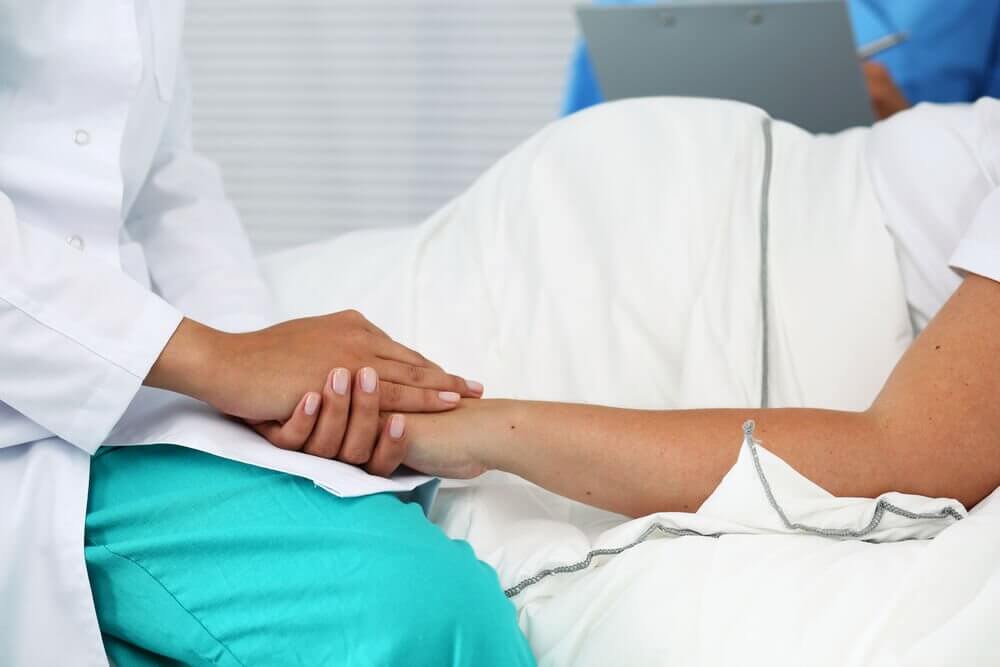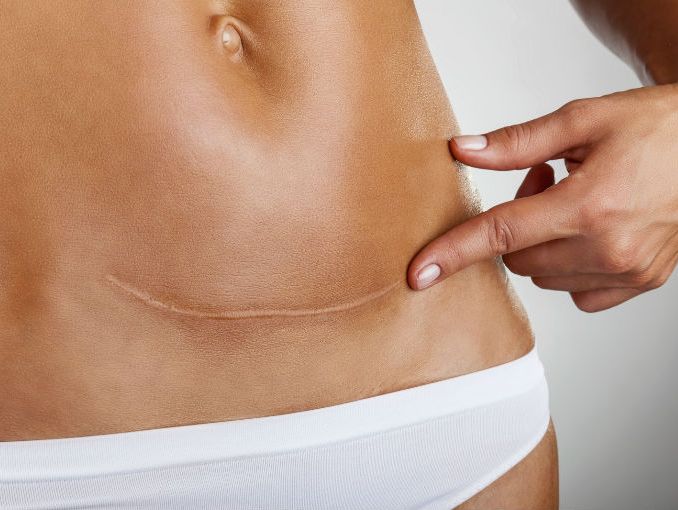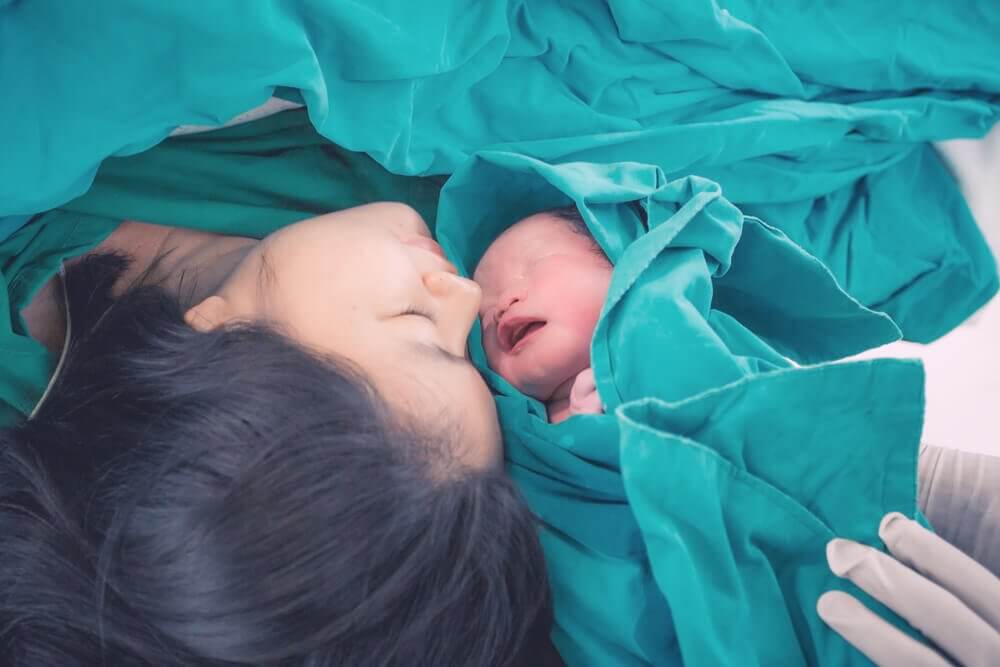How to Take Care of Yourself After a C-Section

A C-section is a safe procedure, but like all surgery it has some risk. Find out how to take care of yourself after bringing your baby into the world via C-section.
It’s important that you take care of yourself properly after a C-section. It’s a safe operation, but there are risks of complications afterwards. Before we begin, let’s talk about what the operation involves.
What is a C-section?
According to a literature review, a C-section (or Caesarean section) is the delivery of the baby through the mother’s abdomen by making an incision through the abdominal wall and uterus. In technical terms, it consists of two surgeries: a laparotomy and a hysterotomy. Hence its complexity and consequential risks.
This major surgery is called for when conditions are putting the lives of the mother and baby in danger. However, because of its success and because of technological advances, it’s turning into a favorite for young, first-time mothers.
What are the risk factors of a C-section?

A C-section is major surgery. Therefore, the associated risks are greater than with a vaginal birth. While it’s a very safe operation, there are possible complications, mainly for the woman. They include: severe bleeding, urinary tract infections, infections of the incision, and complications from the anesthesia. It’s also possible for the nearby organs to be injured.
Learn more:
The Fear of a Caesarean Section
How to take care of yourself after a C-section
After surgery, you’ll probably be worried about taking care of your baby, but you’ll also experience symptoms like nausea and drowsiness. You should let your doctor know how you’re feeling so that they can prescribe medication if necessary.
After 24 hours, they will allow you to get up and move around. They’ll also probably recommend showering around the third day to prevent infection in the wound.
Most women leave the hospital two or three days after a C-section. That will give the doctor time to do what’s necessary to care of you after the surgery. Now, below are some guidelines that will be helpful once you get home.
1. Get moving, but slowly

Although by now your sutures will be removed, you still need to be very careful not to push yourself too much, or else you could hurt yourself. Try to take short walks to speed up your recovery, but nothing else.
Don’t do housework or carry anything very heavy, except your baby. That means you’ll need to get all the help you can from family and friends. When you need to sneeze, cough, or laugh, press a pillow over the incision site. As the weeks go by, your doctor will tell you when and how to get back to your everyday activities.
2. Nurse your baby correctly
Feeding your baby may seem simple. But remember that by now the anesthesia will have worn off and your incision will hurt.
The medical team will show you how to hold your baby when breastfeeding in a way that will require the least amount of effort. They’ll probably teach you to place your baby’s head on your chest and his legs under your arm so that he doesn’t press on the wound on your belly.
Recommended reading:
3. Be patient while your uterus regains its normal shape

Once your baby has been born, your uterus begins the process of regaining its original size and shape. To do that, your body will discharge a fluid made of blood and dead tissue from your uterus. It’s red and it goes by the name of lochia.
It may last six weeks or less, and during this time you can use the pads that your hospital provides, or your own. The color of the lochia will change over time until it ends up clear or yellowish.
4. Drink enough water
In addition to all of the other benefits of good hydration, drinking water will also help prevent constipation. But you’ll need to urinate often, or your bladder will fill up and press on your incision.
5. Intimacy

When it comes to this aspect, it’s generally recommended to wait 6 to 8 weeks. That said, you will need to ask your doctor because they’re the one that knows your particular condition and can tell you the right amount of time to wait before being intimate again.
6. Keep an eye out for signs of infection
A study has outlined some of the most common problems after a C-section. One of them was infection of the incision and another was endometriosis caused by microorganisms like Staphylococcus aureus and Escherichia coli.
Although infection rates are going down due to technological advances in medical procedures, keeping an eye out for infection is an important way to take care of yourself after a C-section.
Some signs of infection are:
- Increased pain
- Fever
- Reddening, pus, or a hot feeling around the incision
- Foul-smelling vaginal discharge
- Dark-colored urine
- Severe leg pain or swelling
Final notes
It’s true that recovery takes much longer for a C-section than a vaginal birth, as does the period of time afterwards that you’ll have to take special care of yourself. However, a doctor will help you decide what will be the best way to bring your baby into the world.
All cited sources were thoroughly reviewed by our team to ensure their quality, reliability, currency, and validity. The bibliography of this article was considered reliable and of academic or scientific accuracy.
- Clement S. Psychological aspects of caesarean section. Best Practice and Research: Clinical Obstetrics and Gynaecology. 2001.
- Nikolajsen L, Sørensen HC, Jensen TS, Kehlet H. Chronic pain following Caesarean section. Acta Anaesthesiol Scand. 2004;
- Ituk U, Habib AS. Enhanced recovery after cesarean delivery. F1000Research. 2018;
- National Institute for Health and Clinical Excellence (NICE). Surgical Site Infection: Prevention and treatment of surgical site infection. NICE Clin Guidel 74 – Surg site Infect. 2008;
This text is provided for informational purposes only and does not replace consultation with a professional. If in doubt, consult your specialist.








